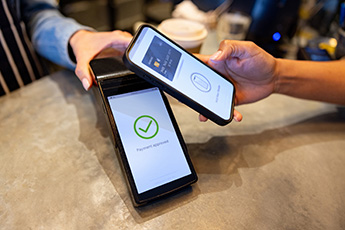According to American Express, the typical American tells 15 people after they have had a bad customer service experience. We know you are more tuned into your customers than most, but it is important to stay tuned in, including your digital banking services.
With so many Americans staying at home, the use of online and mobile services has increased across multiple industries, including banking. For some community financial institutions (CFIs), it has been hard to keep up with the growing demand. But, what if the secret to digital banking isn't technology? That may be music to your ears.
When looking at technology to deepen customer relationships, it helps to take a step back and really consider what competitive advantage any specific technology gives you over the long term. While new features can seem enticing when talking to vendors, any edge one vendor advertises may be replicated by others within a few quarters, equalizing that advantage. Since competing in a technological arms race is often outside the budget constraints of CFIs, you may be happy to know that a key element in digital banking according to various surveys is the customer experience. We touch on three important areas in digital banking for superior customer experience.
- Keep connecting with content. Customer experience is especially important where branches have had to close or limit service hours. A Fed survey found when rural communities suffered the loss of a physical branch, customers missed having a place to go for leadership in the community. Having a dedicated place with information to help your bank customers feel connected to you can help. Right now, COVID-19 and related information is likely where the focus is for community content. But, even after the pandemic, you can continue to provide value-added content.
- Continue gathering information. With each email, digital transaction, and phone call, make sure information is collected. Your customers are facing a variety of challenges, but they may not always ask for help. Further, it has been reported that about 67% of bank customers are open to providing more information if they would get extra benefits. So, being able to proactively reach out to them with the help they need, based on their information, will be appreciated.
- Stay accessible. While technology advances, it is even more important than ever to stay accessible. As a customer, it is frustrating not finding what you are looking for, or needing special attention and not getting it. While we know that special attention is your specialty, it may not be integrated as intuitively into your digital services from your customers' perspective. If a response to a question takes longer than 5 seconds, the user may stop using the app or website, according to the tech website DNSstuff. So, be sure to have an obvious button or icon along with immediate support, when help is needed.
As you work hard to bring more transactions online, remember that each can serve as a starting point for a conversation. This not only keeps you connected to your customers, but also enhances your digital banking differentiation, regardless of your budget.




